RomeⅠ
Raphael said that modern Rome was almost entirely built over the debris of ancient Rome, and it is true that we cannot take a step there without being arrested by some relics of antiquity. […] Almost all its buildings have a history. We may see in them, so to speak, a picture of the ages. (5-III)

The Colosseum, the obelisks, all the marvels that are collected here from Egypt, from Greece, from far-off ages, from the days of Romulus to those of Leo X – as though greatness attracted greatness, and the same place ought to hold all that man could rescue from the ravages of time – all these marvels are consecrated as monuments to the dead. Our indolent life is hardly perceived; the silence of the living is a homage to the dead. They endure – we pass away. (2-III)
Perhaps one of the secret charms of Rome is that it reconciles our imagination to the long sleep. (2-III, 32)
ⅰ)Capitol Square (Piazza del Campidoglio)

Oswald and Corinne stopped before entering, looking at the Egyptian lions near the gate of the Capitol stairs. These lions have a remarkable expression of strength and repose; there is something in their countenances that belongs to neither animals nor men. Egyptian sculptors had much greater talent for capturing animal faces than human ones. (4-IV, 62)
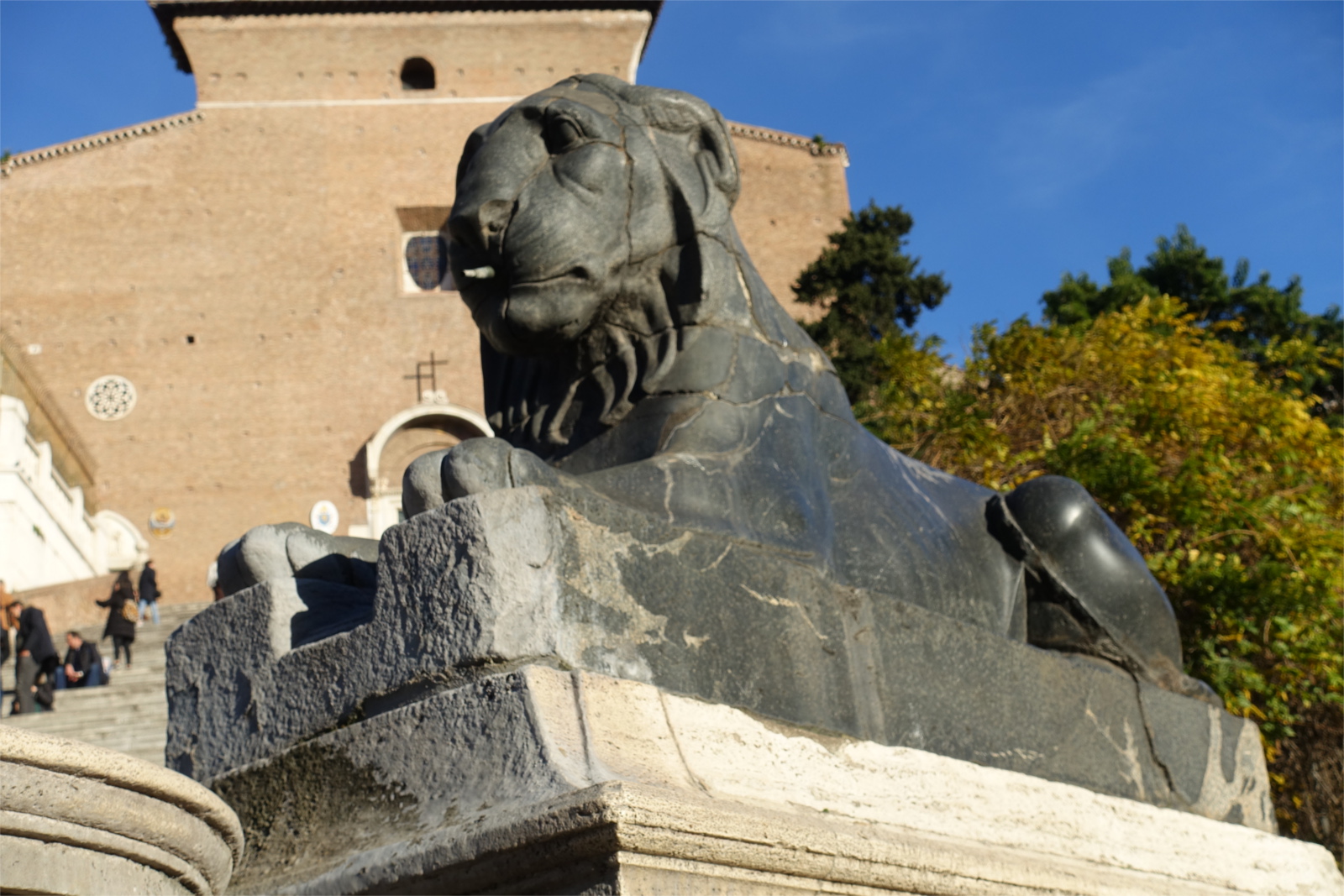
…and the equestrian statue of Marcus Aurelius, fair and calm in the midst of all these memories. Thus, all is there: the heroic times represented by the twin deities, the Republic by the lions, the civil wars by Marius, and the golden days of the empire by Marcus Aurelius. (4-IV, 63)
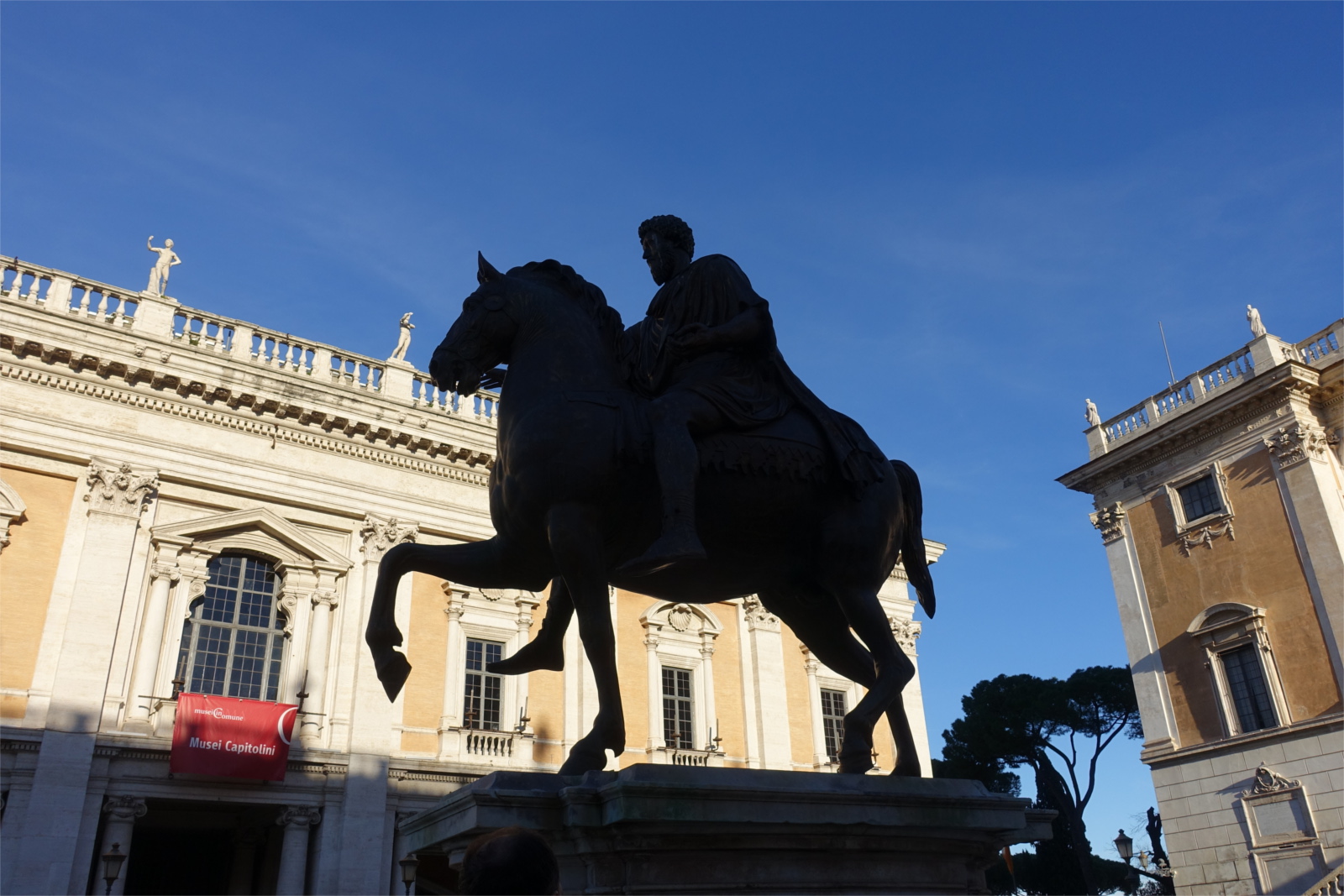
ⅱ)The Arch of Titus (Arco di Tito)
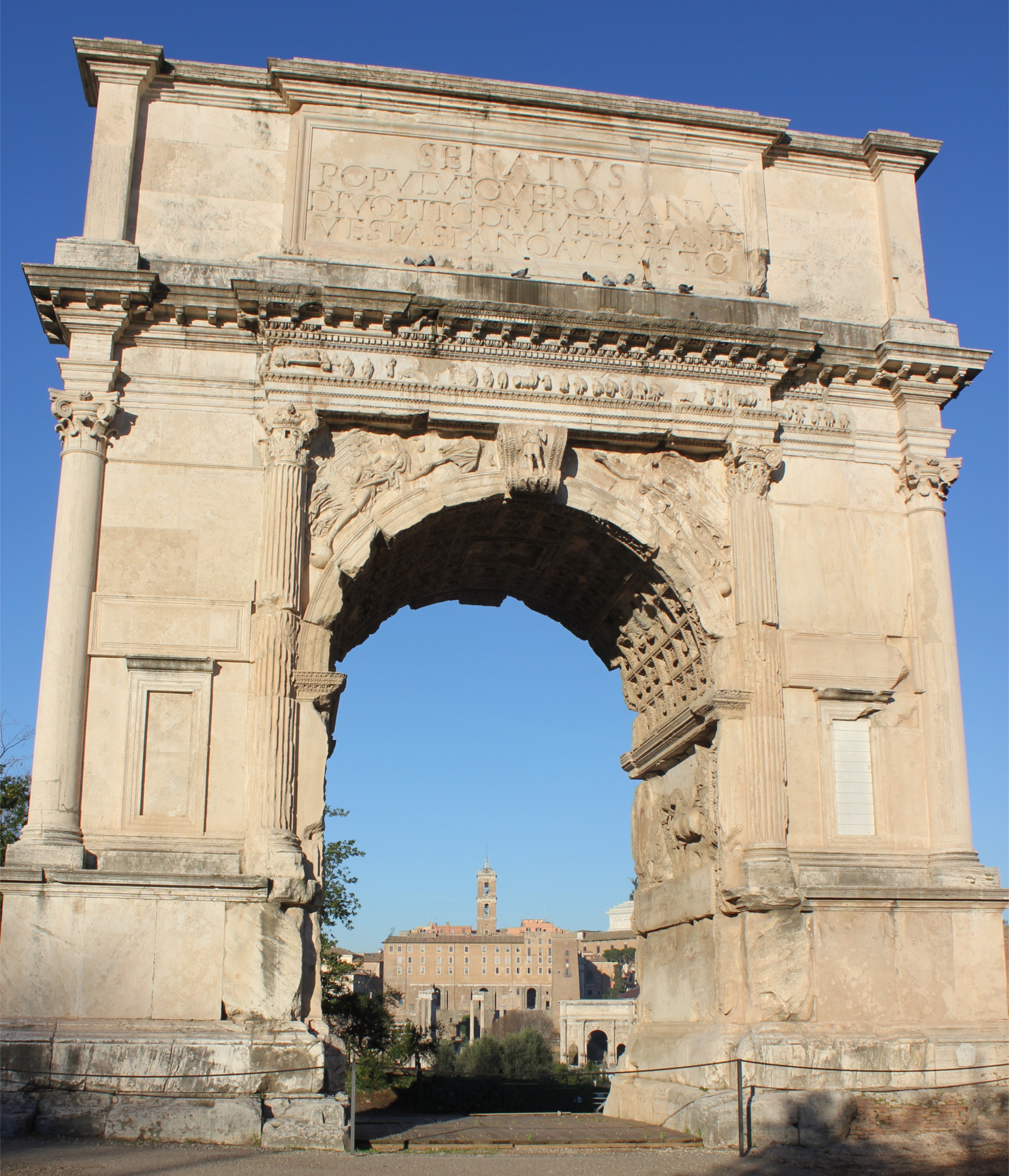
At the peak of Mount Palatine rises a beautiful triumphal arch, dedicated to Titus for his conquest of Jerusalem. They say that the Jews in Rome never pass under this arch, and a little path emerges that they are said to take in order to avoid it. (4-IV)
The eighteenth-century Arch of Titus before its restoration.
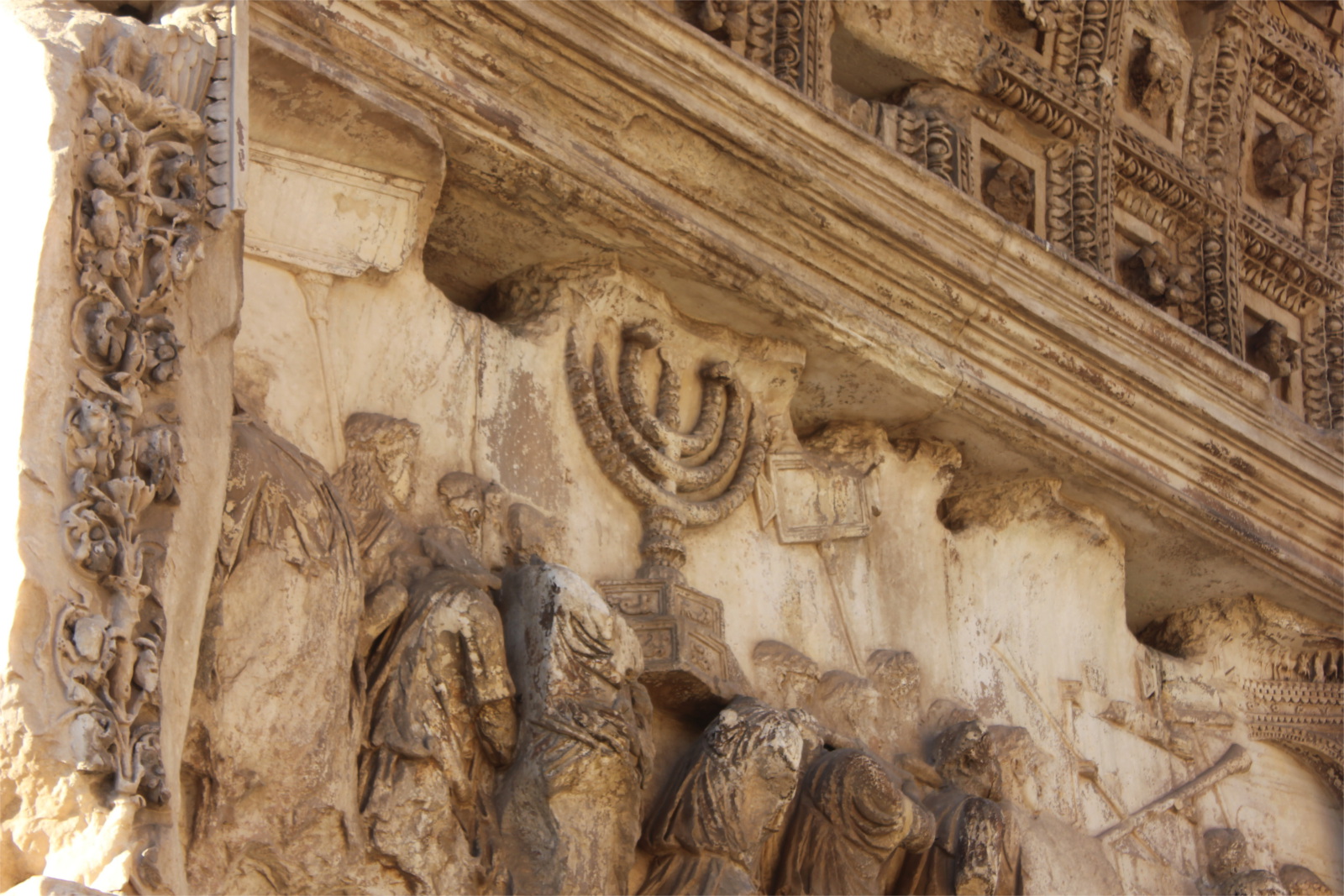
Explanation
The Arch of Titus was built in 81 to commemorate the victory of the emperor Vespasian and his son Titus during the Jewish revolts in Jerusalem in 70. Inside the arch are representations of loot, including altars, trumpets, and golden candlesticks. They symbolize the Roman siege of Jerusalem. A Roman triumph traditionally carried loot from whatever place they were celebrating having conquered through the city, and these images are representations of what they actually carried after this siege. The golden candlesticks (candelabras) were especially symbolic, as they were connected with Judaism.
ⅲ)Colosseum (Colosseo)
This splendid building, only the repurposed gold and marble stones of which remain, was used as an arena for gladiators to fight with wild beasts. The Roman people, amazed and deceived by their powerful excitement, did not let themselves express their natural feelings. (4-IV, 66-67)

Public Domain
Explanation
Founded by the order of Emperor Vespasian in 72, this world-famous amphitheater was completed in 80. The bulk of the tremendous costs of the building were financed by the loot from the Temple of Jerusalem, burned by Roman legions in 70. The Colosseum was supposed to keep the Roman public out of society and politics by providing entertainment through events such as gladiatorial shows. Staël’s ‘natural feelings’ refer to the Christian ethics of the moderns.
ⅳ)St. Angelo Castle (Castel Sant’Angelo)
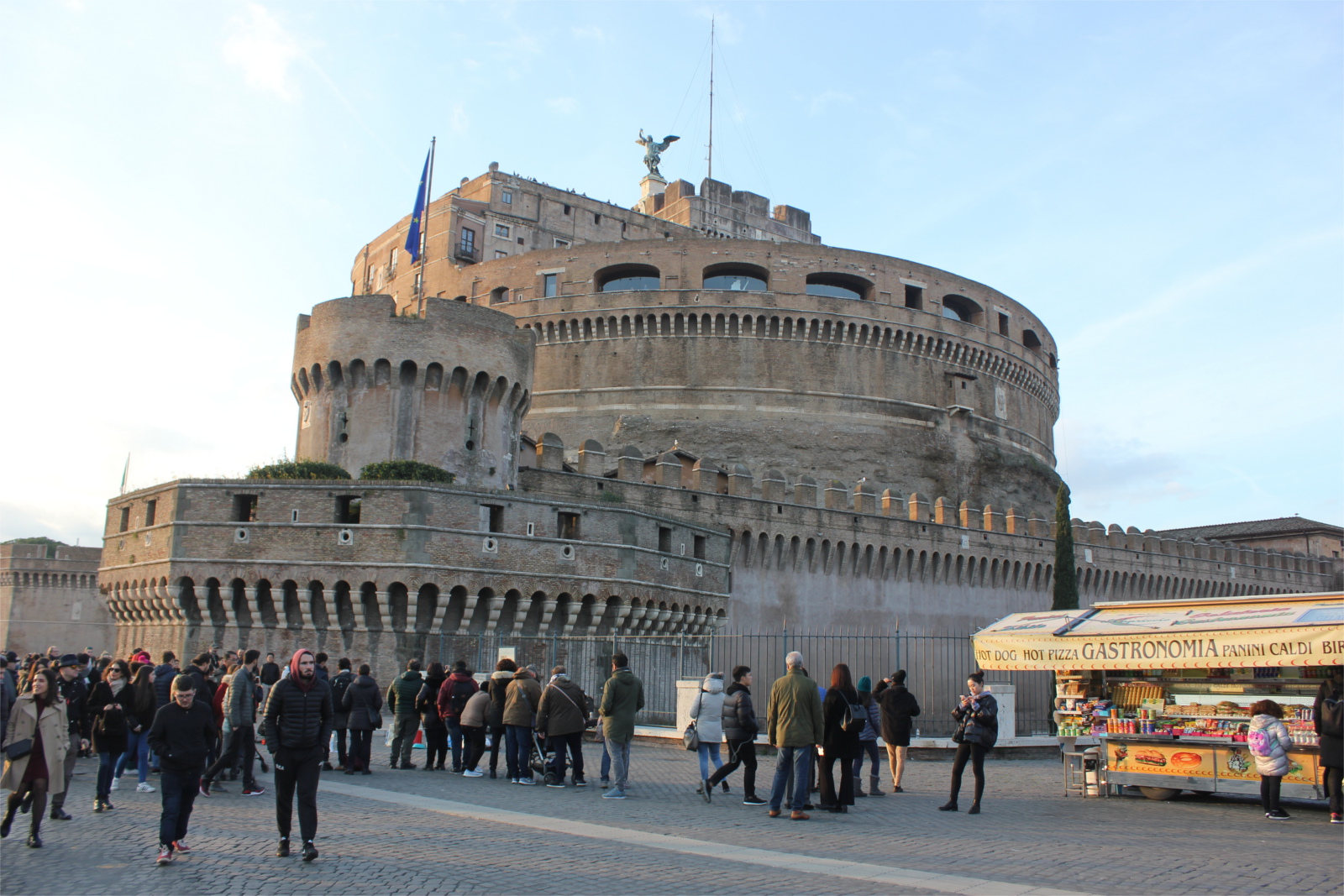
On their way to St. Peter’s, they stopped before Castle St. Angelo.
‘This,’ said Corinne, ‘is one of the buildings whose exterior has the most originality; this tomb of Hadrian, changed into a fortress by the Goths, bears the impression of both of its first and second iteration. Built for the dead, an impenetrable enclosure surrounds it; nevertheless, the living have added something hostile to it with external fortifications that contrast with the silence and grand uselessness of a funeral monument. On the summit is a bronze angel with its sword drawn, and within lie cruel prisons. All that has occurred in Roman history, from the time of Hadrian to our own, is linked with this place.’ (4-III,56)
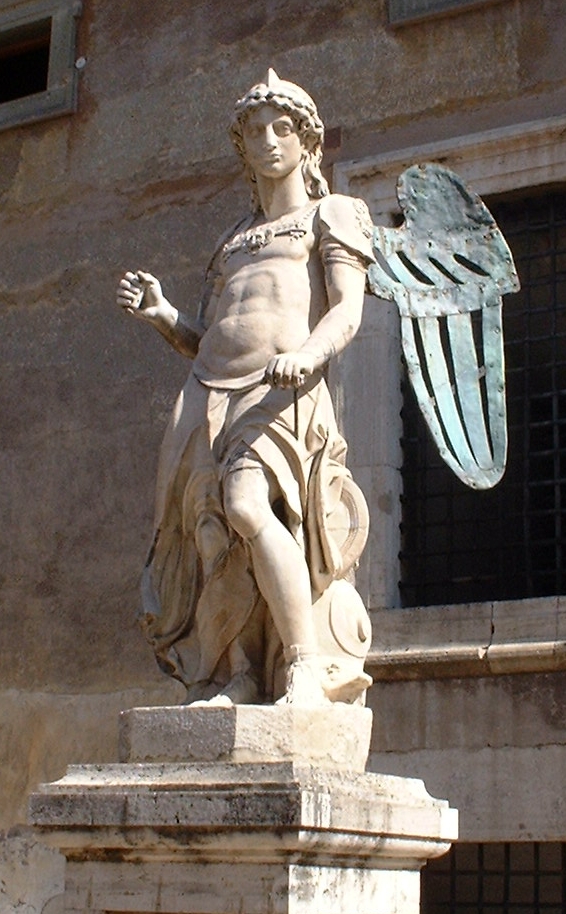
Public Domain
Explanation
Castel Sant’Angelo is on the right bank of the Tiber River in Rome. As Staël writes, it was originally intended as a mausoleum, but later became a fortress.
In 135, Hadrian, one of the ‘five good emperors’ , began building his own tomb, which was completed in 139 after his death. It was later used as a military facility and incorporated into part of the Aurelian Wall, the city wall of Rome, in 403.
In the 10th century, it became a Vatican military fortress and a refuge for the pope, and in the 13th century an evacuation passage directly connected to the Vatican was created. You can visit a luxurious residence that was built in the first half of the 16th century by Pope Paul III.
The name of Castel Sant’Angelo originated from the fact that Pope Gregorius I saw the Archangel Michael with a sword on the top of the castle when a plague broke out in Rome in 590, which was interpreted as a sign of the end of the epidemic. In the 16th century, a marble statue of an angel was placed on top of the castle, which Staël mentions.
ⅴ)Pantheon
Corinne pointed out that the Pantheon was built in such a way as to appear larger than it really was.
‘The church of St. Peter’s will have a quite different effect on you; at first, you will think that building is much smaller than it really is. The illusory effect of the Pantheon arises, we are told, from there being more space between the columns and the air playing freely around, and especially because there we can hardly note any details of ornament, while St. Peter’s is overlaid with them. Antique poetry, therefore, only designed a grand whole, leaving the thoughts of the hearer to fill up the gaps, to develop it more fully; in every way, we moderns, we say too much.’ (4-III)
This temple was consecrated by Agrippa, the favorite of Augustus, for his friend, or, rather, his master. However, this master had the modesty to refuse the dedication of the temple to himself, and Agrippa found himself obliged to dedicate it to all the gods of Olympus, instead of to the earthly god, power. (4-III)
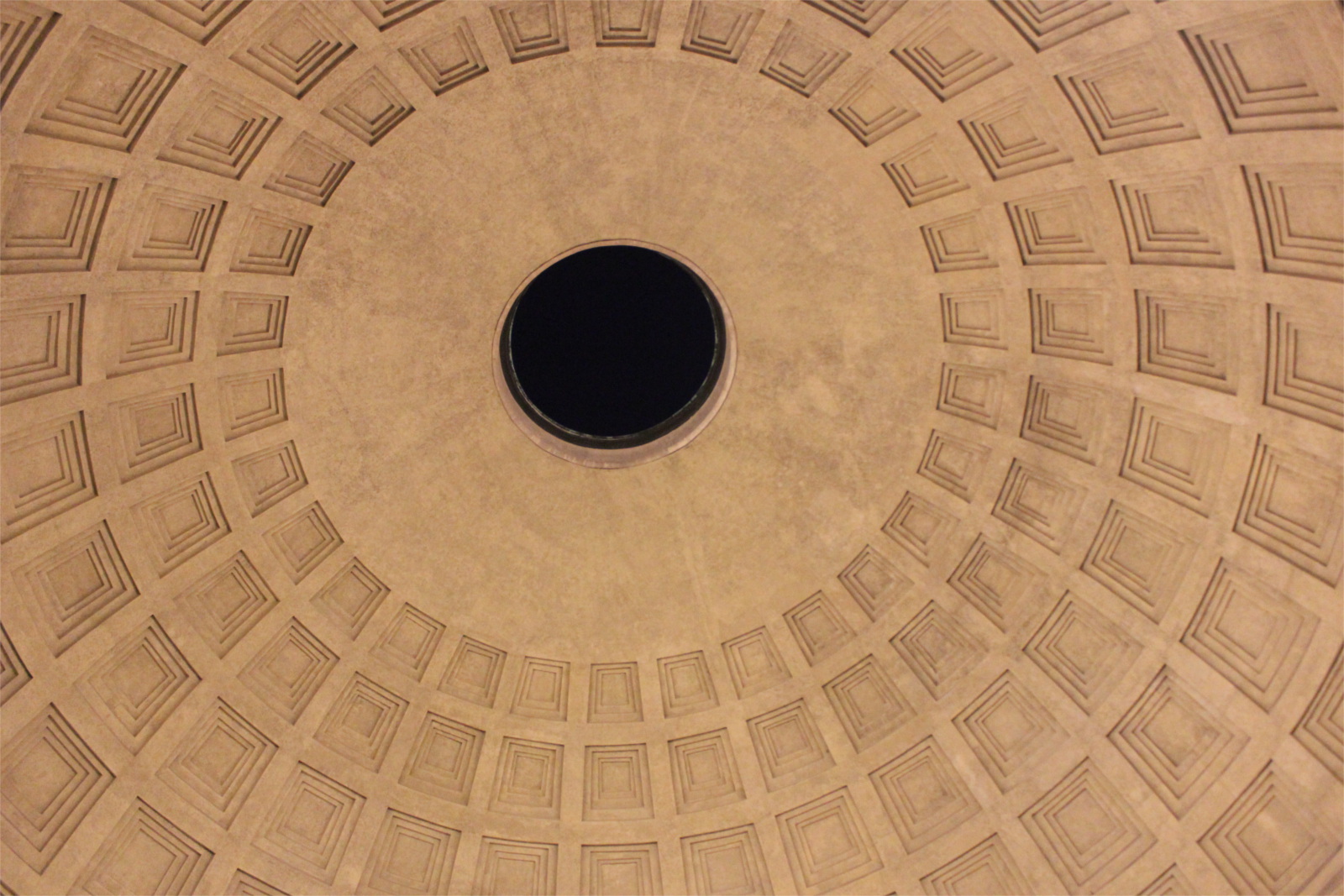
Explanation
The Pantheon remains the most complete piece of Roman architecture and the world’s largest stone-made architectural marvel, even today. The Pantheon, meaning ‘all gods’, was originally dedicated to all the Roman gods. This temple was built by Marcus Vipsanius Agrippa, a soldier, statesman, and architect, in 25 B.C. He was close to the first Roman emperor, Augustus, having fought alongside him in the years leading up to Augustus’ acquisition of power. They were adolescent friends, as it were.
There was a rumor, as Staël notes, that the Pantheon was originally intended to serve as Augustus’ mausoleum, but it was changed to a temple in order to avoid public opposition. This initial Pantheon, however, was destroyed in 80 during a fire. Staël visited the second Pantheon, which was rebuilt by Roman emperor Hadrian in 118-128 and is still visible today.
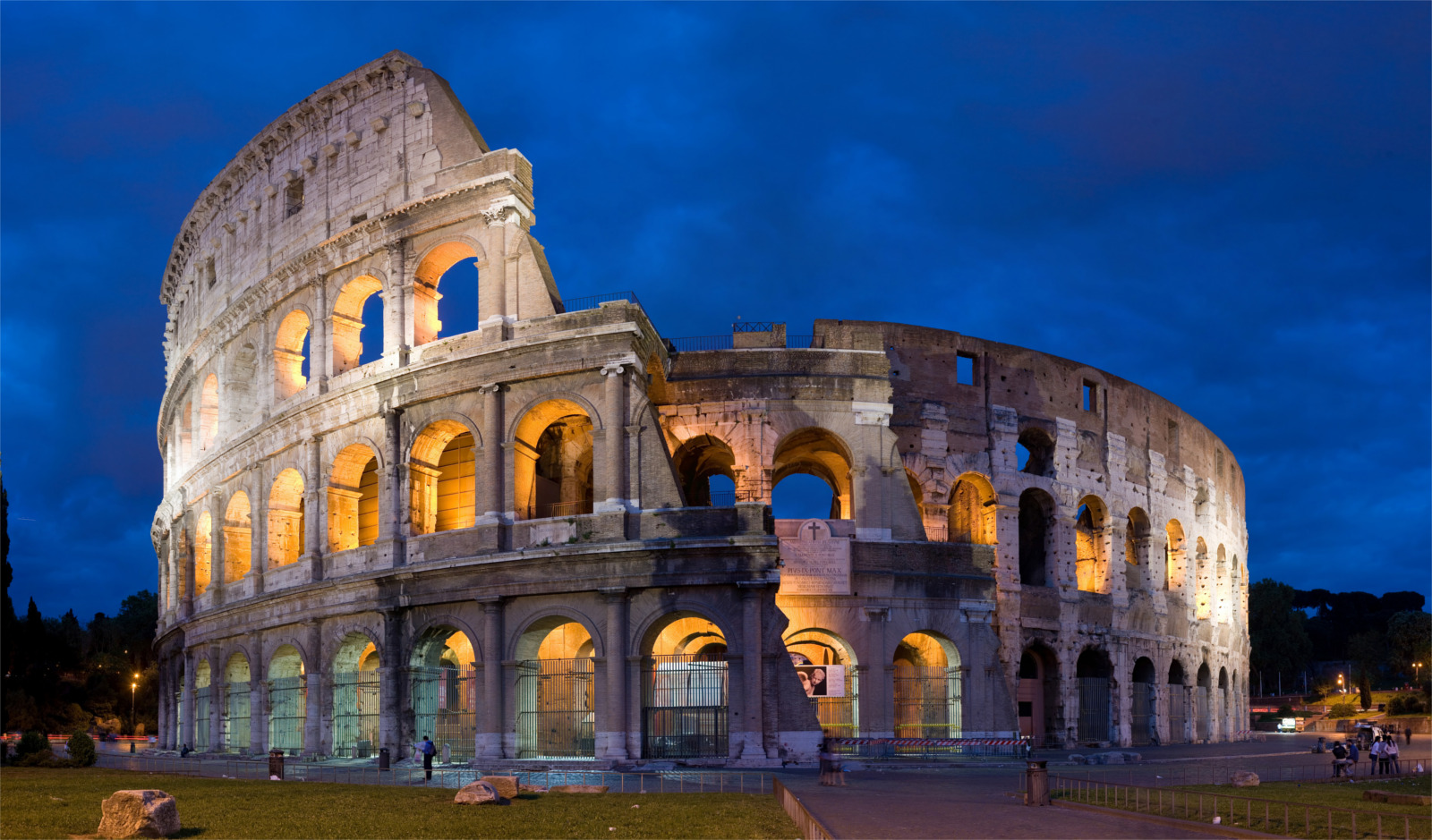
Explanation
Readers might expect a description of the place more like, ‘a beautiful square with staircases created by the genius Michelangelo during the Renaissance period…’ However, Staël hardly mentions the Renaissance period, even in passing, and her image of Rome is essentially reduced to that of ancient Rome.
Marcus Aurelius, the 16th Roman emperor (reign: 161–180), is among the so-called ‘five good emperors,’ and is also known for preferring academics over military affairs. The equestrian statue of Marcus Aurelius was built in the ancient Roman period before Christianization, and it is the only bronze equestrian statue that exists of this Roman emperor. It only survived because it was initially confused with a statue of the apostle Saint Paul. It was installed in the center of Capitol Square during Staël’s life, but has now been replaced by a replica. Today, the original statue is housed in the Capitol Museum.